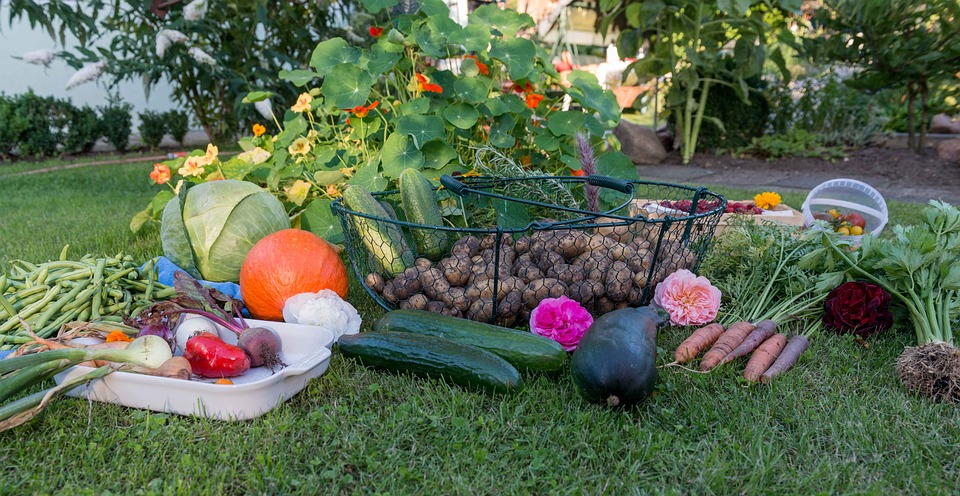All Categories
Featured
Table of Contents
Container Gardening for Pollinators
Horticulturalist Daniel Cunningham once said, "If you provide a habitat, they will come." He was referring to pollinators, the bees, butterflies, and other insects that play a crucial role in our ecosystem. Container gardening is a wonderful way to attract these essential creatures to your garden and provide them with a safe haven.
When planning a container garden for pollinators, it's important to choose flowers that will attract them. Some popular choices include bee balm, lavender, coneflowers, and salvias. These plants offer nectar and pollen, which are the main food sources for pollinators.
Another important aspect of container gardening for pollinators is providing habitat. In addition to flowers, consider adding some grasses or native plants that offer shelter and protection. You can also create small "bee hotels" by drilling holes into a block of wood, providing nesting spots for solitary bees.
It's also crucial to avoid using pesticides in your container garden, as they can harm pollinators. Instead, opt for natural pest control methods such as companion planting or introducing beneficial insects like ladybugs to your garden.
By implementing these strategies, you can create a beautiful container garden that not only adds beauty to your space but also supports the essential work of pollinators. Whether you have a small balcony or a spacious backyard, container gardening for pollinators is a rewarding and environmentally friendly way to use your green thumb.
Helpful Links:
Recommended Product:

UPKOCH Hanging Flower Pot 30pcs Flower Basket Hangers Bracket Plant Hooks Pergola Hooks Plastic Flowerpot Hooks Gardening ...

Low-Maintenance Container Gardening
Not everyone has the time or energy to dedicate to a high-maintenance garden. That's where low-maintenance container gardening comes in. With a few simple strategies, you can create a beautiful container garden that requires minimal effort to maintain.
One of the keys to low-maintenance container gardening is choosing the right plants. Opt for varieties that are known for their durability and resilience. Succulents, for example, are excellent choices as they are drought-tolerant and require very little watering. Other low-maintenance options include ornamental grasses, dwarf evergreens, and perennials.
Another important factor to consider is the container itself. Choose containers that are large enough to accommodate the root systems of your plants, as larger containers tend to require less frequent watering. Additionally, opt for containers with drainage holes to prevent overwatering.
When it comes to watering, the key to low-maintenance container gardening is finding the right balance. Overwatering can lead to root rot, while underwatering can cause plants to wither and die. The best approach is to water your containers thoroughly when the top inch of soil feels dry to the touch. This will ensure that the roots receive adequate moisture without drowning the plants.
Finally, consider using slow-release fertilizers or organic compost to provide your plants with the nutrients they need. These options release nutrients slowly over time, reducing the need for frequent fertilization.
By following these tips and choosing low-maintenance plants and containers, you can enjoy a beautiful container garden with minimal effort. Sit back, relax, and let your low-maintenance garden thrive!
Recommended Products:

Gardening with Succulents in Containers
Gardening with succulents in containers is a popular trend among plant enthusiasts. Succulents are known for their unique and interesting shapes, as well as their ability to store water in their leaves, stems, and roots. This makes them well-suited for container gardening, as they can thrive in dry and arid conditions.
When selecting succulents for your container garden, it's important to choose varieties that have similar water and sunlight requirements. This will ensure that all of your plants are able to thrive in the same environment. Some popular succulents for container gardening include echeveria, sedum, and hens and chicks.
When planting succulents in containers, it's important to use well-draining soil to prevent root rot. You can either purchase a specialized succulent potting mix or create your own by mixing equal parts potting soil, sand, and perlite.
Container selection is also important when gardening with succulents. Choose containers with drainage holes to prevent water from sitting in the bottom and causing root rot. You can also get creative and repurpose unique containers, such as teacups or mason jars, for a more personalized touch.
When it comes to caring for succulents in containers, it's important to provide them with enough sunlight. Most succulents require at least six hours of direct sunlight per day. If you're growing succulents indoors, place them near a south-facing window or supplement with grow lights.
Another important aspect of succulent container gardening is watering. Succulents have shallow root systems and are susceptible to overwatering. Allow the soil to dry out completely between watering and water sparingly. During winter, succulents go through a dormancy period and require even less water.
Gardening with succulents in containers is a versatile and rewarding way to showcase these unique plants. Whether you're a novice gardener or an experienced plant enthusiast, succulents are a great addition to any container garden.
Helpful Links:
Related Products:
Sunlight Requirements: The Ultimate Guide to Container Gardening

Sunlight Requirements The Ultimate Guide to Container Gardening
More about Gardening Conatiner Gardening Hanging Baskets: Featured Posts
Container Gardening: The Beauty of Hanging Baskets: Enhancing Your Outdoor Space
The Ultimate Guide to Container Gardening
© 2023 Gardening Container Gardening Hanging Baskets - Gardening Container Gardening Hanging Baskets All Rights Reserved.
Latest Posts
Traditional Window Cleaning Tools
Transform Your Exercise Routine with Powerful Motivation Tips
Water Damage Wall Repair Guidelines in West Palm Beach FL